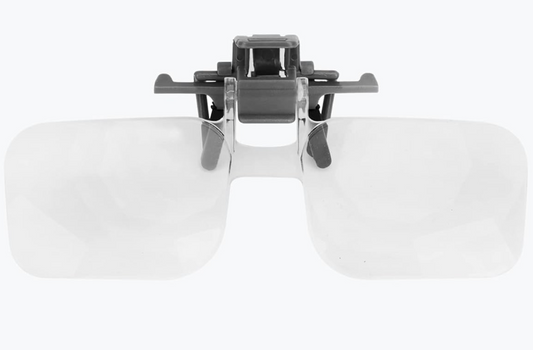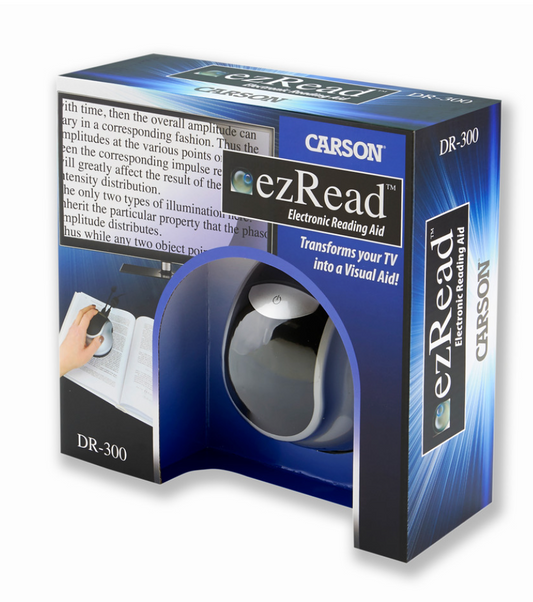Discover Syfovre: Your guide to managing Geographic Atrophy
Share
Navigating the world of eye health can feel overwhelming, especially when faced with the challenges of Geographic Atrophy (GA), a progressive form of macular degeneration.
Thankfully, advances in treatment bring some hope: Syfovre, an FDA-approved option specifically designed to manage GA and support those dealing with vision loss. In this guide, we'll explore how Syfovre can be a game-changer for individuals experiencing this condition.
Whether you're seeking information for yourself or a loved one, understanding the role of Syfovre in Geographic Atrophy treatment could be a crucial step towards preserving eye health and enhancing quality of life.
Understanding Geographic Atrophy (GA)
Causes and Symptoms of GA
Geographic Atrophy is an advanced form of dry age-related macular degeneration (AMD). It occurs when cells in the retina gradually deteriorate, leading to vision loss.
The primary cause of GA is the aging process, but genetic factors and lifestyle choices can also play a role. Smoking, high blood pressure, and poor diet are known risk factors.
Symptoms of GA include difficulty reading, recognizing faces, or adapting to low light conditions. Many people experience a blurry or dark spot in their central vision, which can grow over time. Colours may seem reduced in intensity and overall quality of life can suffer.
Progression and Impact on Vision
Geographic Atrophy is a progressive condition that worsens over time. The rate of progression varies among individuals, but it generally follows a predictable pattern.
Initially, small areas of the retina begin to atrophy or waste away. As these areas expand and merge, they form larger regions of vision loss, often described as "geographic" due to their appearance.
The impact on vision can be significant. As GA progresses, it can lead to severe central vision loss, making daily activities like reading, driving, or recognizing faces increasingly challenging. Understanding the difference between dry and wet macular degeneration is crucial for patients and caregivers to better understand the progression of their disease.
Current Treatment Options
Before the introduction of Syfovre, treatment options for Geographic Atrophy were limited (none really existed). The focus was primarily on slowing progression and managing symptoms rather than reversing the condition.
Common approaches include:
- Nutritional supplements (AREDS2 formula)
- Lifestyle modifications (smoking cessation, diet changes)
- Low vision aids and adaptive technologies
- Regular monitoring and eye exams
While these methods can help manage GA and the impact it has on day to day life, they don't address the underlying cause of the condition. This limitation underscores the significance of Syfovre as a groundbreaking treatment option. It is currently only approved for use in the United States.
What is Syfovre?
Syfovre (also known by its generic name pegcetacoplan) is an innovative medication designed specifically to treat Geographic Atrophy (GA) associated with age-related macular degeneration (AMD).
Developed by Apellis Pharmaceuticals, Syfovre is the first and only FDA-approved treatment for GA. It's administered through intravitreal injections, meaning it's delivered directly into the eye via a needle (while this is unpleasant, it tends to not be painful)
Syfovre works by targeting a specific part of the immune system called the complement cascade, which is believed to play a role in the development and progression of GA. By modulating this system, Syfovre aims to slow down the rate of retinal cell death.
More detailed information about Syfovre's mechanism can be found on the official website.
Benefits of Using Syfovre
Syfovre offers several key benefits for individuals dealing with Geographic Atrophy. Let's explore how it improves eye health, manages GA progression, and has impacted real patients' lives.
Improving Eye Health
Syfovre contributes to overall eye health by targeting the underlying mechanisms of Geographic Atrophy. Its unique approach helps preserve retinal cells and maintain visual function.
By inhibiting the complement cascade, Syfovre reduces inflammation and oxidative stress in the retina. This protection can help maintain the health of remaining retinal cells, potentially preserving vision for longer periods.
Moreover, Syfovre's regular administration schedule ensures consistent treatment, which may lead to better long-term outcomes for eye health. The American Academy of Ophthalmology provides more insights into Syfovre's benefits.
Managing Geographic Atrophy
Syfovre has shown promising results in managing the progression of Geographic Atrophy. Clinical trials demonstrated a significant reduction in GA lesion growth compared to untreated eyes.
Key benefits in managing GA include:
- Slowing the rate of GA progression
- Potentially preserving central vision for longer
- Delaying the onset of severe vision loss
It's important to note that while Syfovre can slow GA progression, it doesn't reverse existing damage. Early detection and treatment are crucial for optimal results.
Syfovre Administration Process
Understanding the Syfovre administration process is crucial for patients considering this treatment. This section covers preparation, dosage, potential side effects, and the importance of ongoing monitoring.
Preparation and Dosage
Syfovre is administered through intravitreal injections, meaning it's injected directly into the eye. The process typically follows these steps:
- Eye examination and cleaning
- Local anesthetic application
- Injection of Syfovre into the eye
- Post-injection monitoring
Proper preparation is crucial. Patients should inform their doctor about any medications they're taking and follow all pre-appointment instructions carefully.
Potential Side Effects
As with any medical treatment, Syfovre may cause side effects. Most are mild and resolve on their own, but it's important to be aware of potential risks.
Common side effects include:
- Eye discomfort or pain
- Redness in the eye
- Floaters (small dark spots in vision)
More serious, but rare, side effects can include:
- Eye infection
- Retinal detachment
- Increased eye pressure
Always report any unusual symptoms to your healthcare provider promptly. For a comprehensive list of questions to ask your doctor, visit this resource.
Monitoring and Follow-Up
Regular monitoring is essential when using Syfovre. Your healthcare team will schedule follow-up appointments to assess the treatment's effectiveness and monitor for any side effects.
These appointments typically include:
- Visual acuity tests
- Eye examinations
- Imaging studies (e.g., OCT scans)
Your doctor may adjust the treatment schedule based on your response and any side effects. Open communication with your healthcare team is crucial for optimal results.
Supporting Your Macular Health
While Syfovre offers a promising treatment for Geographic Atrophy, supporting overall macular health is equally important. This section explores lifestyle changes, complementary treatments, and resources for patients and caregivers.
Lifestyle Changes for Eye Health
Adopting a healthy lifestyle can significantly support your macular health and complement Syfovre treatment. Key recommendations include:
- Quit smoking: Smoking is a major risk factor for macular degeneration.
- Maintain a healthy diet: Certain foods can help prevent macular degeneration.
- Exercise regularly: Physical activity can improve overall eye health.
- Protect your eyes from UV light: Wear sunglasses and avoid direct sun exposure.
Additionally, managing other health conditions like high blood pressure and diabetes can positively impact your eye health.
Combining Treatments for Maximum Effect
While Syfovre is a powerful tool in managing Geographic Atrophy, combining it with other treatments can potentially enhance its effectiveness.
Consider these complementary approaches:
- Nutritional supplements (e.g., AREDS2 formula)
- Low vision aids and adaptive technologies
- Regular eye exercises
- Stress reduction techniques
Always consult with your healthcare provider before starting any new treatments or supplements to ensure they're safe and appropriate for your situation.
Resources for Patients and Caregivers
Navigating life with Geographic Atrophy can be challenging, but numerous resources are available to support patients and caregivers:
- Support groups (online and in-person)
- Educational materials from reputable organizations
- Low vision rehabilitation services
- Financial assistance programs for treatment costs
Remember, you're not alone in this journey. Reach out to your healthcare team, support groups, and loved ones for assistance and encouragement. With the right support and treatment plan, including Syfovre, many individuals with GA can maintain a good quality of life and preserve their vision for longer.




